Every year I like to give a little push for 2 native Currants that, I believe, could be more widely utilized in home landscapes.

The first is Clove Currant (Ribes odoratum). I like to think of this plant as the North American answer to Common Lilac (Syringa vulgaris). That is to say, it has an intoxicating fragrance in early- to mid-spring that entirely compensates for its unimpressive performance for the rest of the year.
I have mine planted near the sidewalk, and it perfumes not just the whole Front Garden but the yards on either side of us as well. It never fails to elicit appreciative comments.
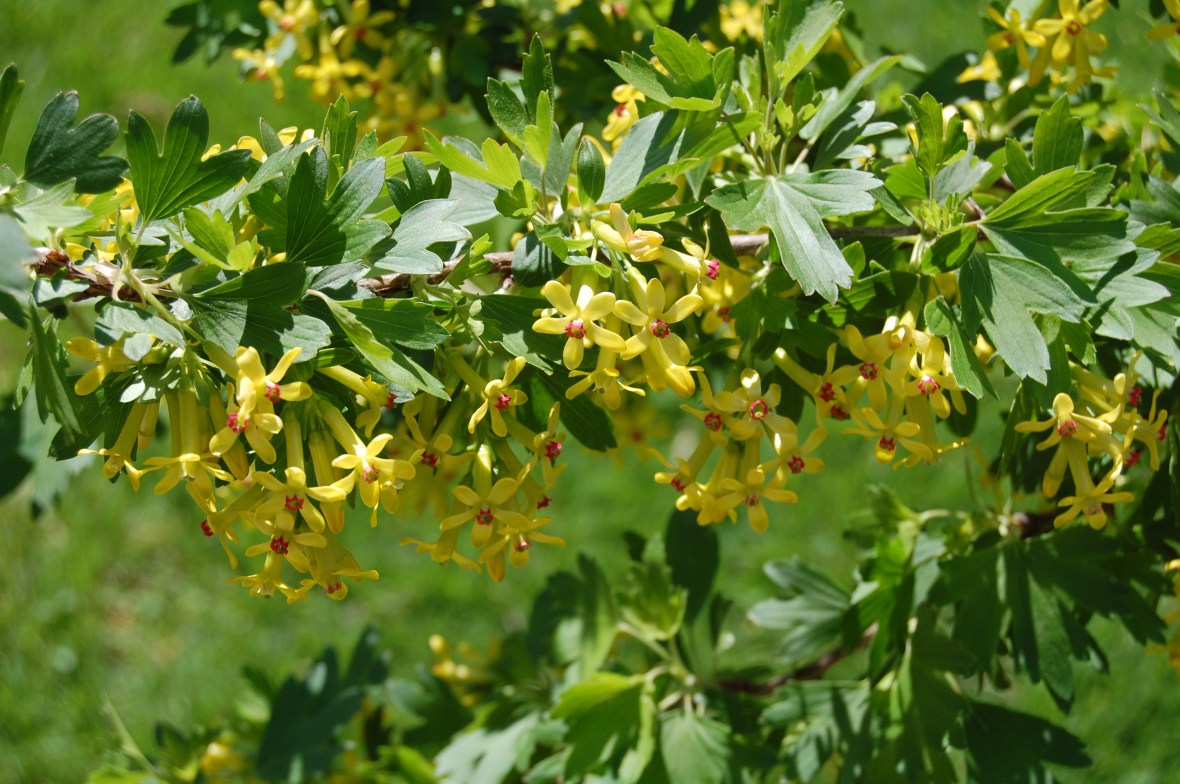
Clove Currant grows to about 8′ tall. It has large (for a currant) purple-black fruit that the birds seem to ignore for some reason. You’ll need male and female plants for heavy fruit set. It will sucker, but for me at least it hasn’t been hard to control. This is mostly a plant of the Great Plains, native from South Dakota to Texas, east to Minnesota and Illinois. The shape is not especially elegant, but that fragrance makes up for all other inadequacies.
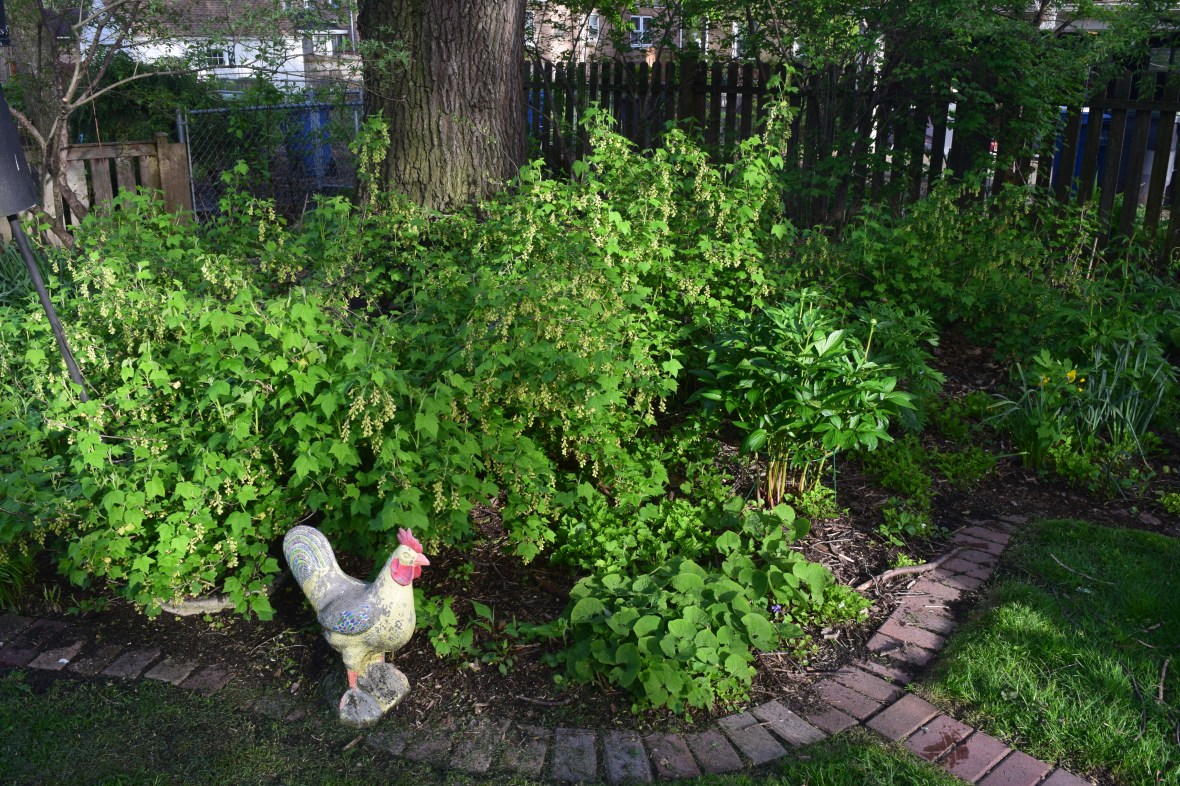
Wild Currant (Ribes americanum) – also known as American Black Currant – does not have a season of glory like Clove Currant. It has a green, calming presence throughout the growing season. It makes a low-growing thicket around the Siberian Elm (Ulmus pumila) in our shady back garden.
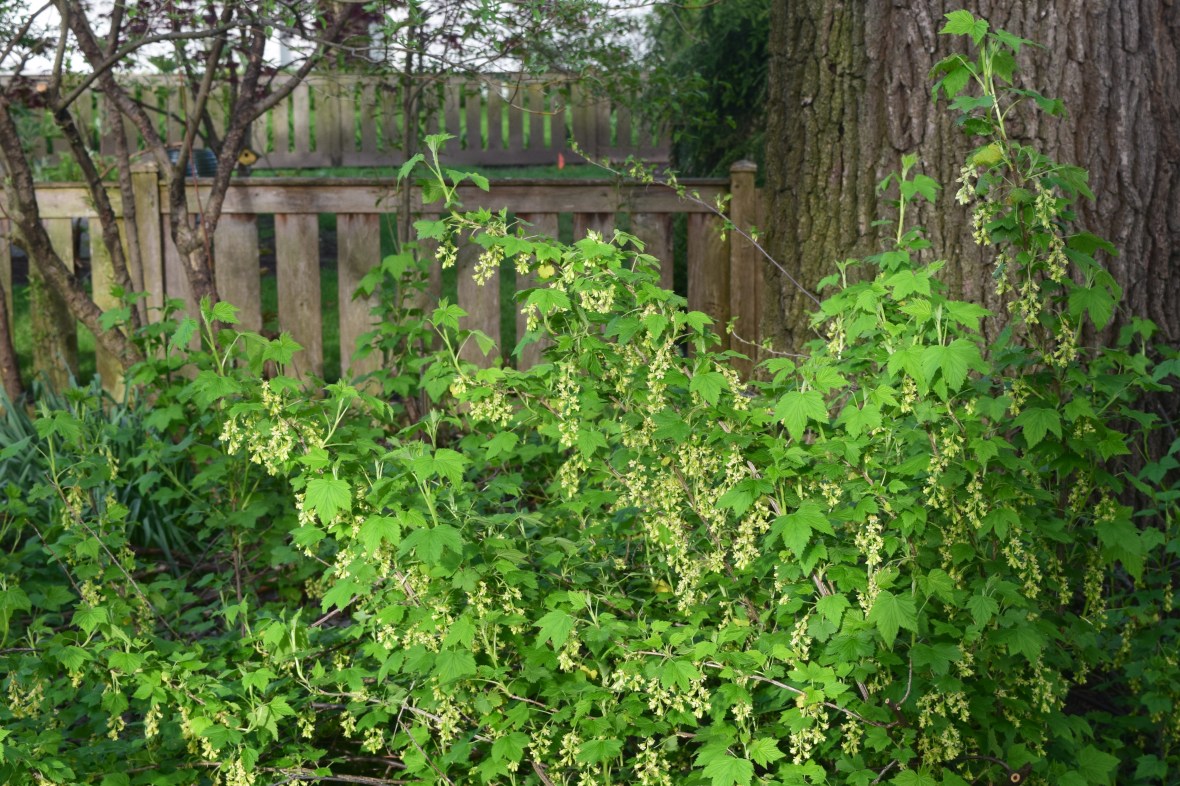
Wild Currant blooms later than Clove Currant, with hanging clusters of yellow-green flowers. Wild Currant is shade tolerant and prefers moist soil.
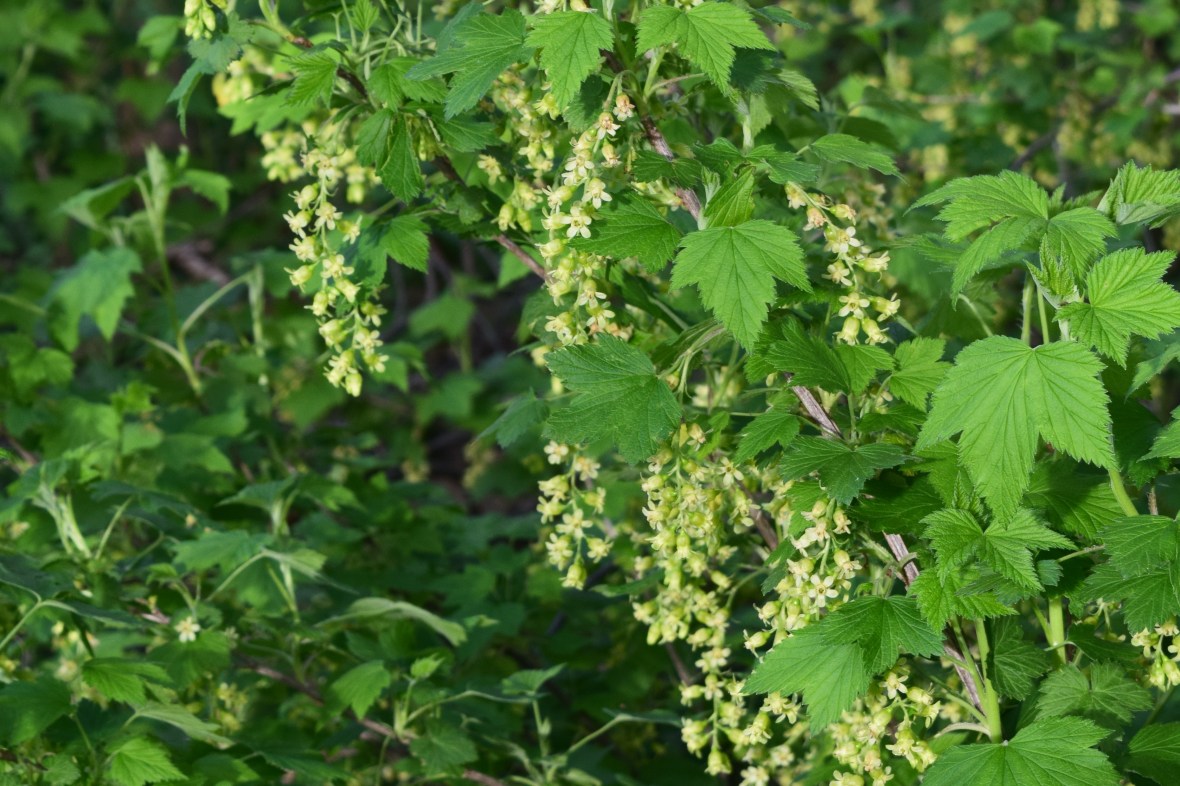
This shrub grows fast and it spreads fast. Arching stems reach down to the soil, take root, and form new plants. So it is an on-going effort, though not an very difficult one, to keep this plant in bounds. And Wild Currant is resistant to Black Walnut toxicity!
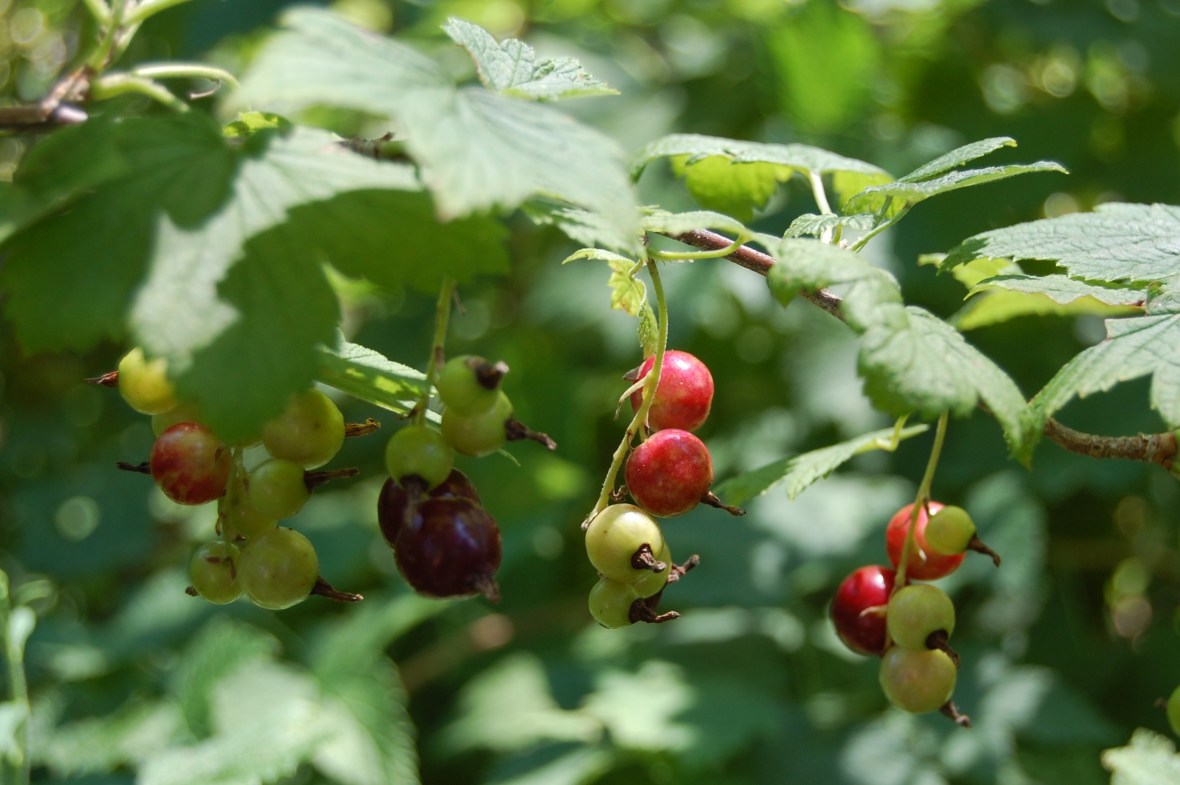
The fruits of Wild Currant ripen over a long period and are popular with birds. I like to watch Robins and Cardinals hopping among the branches in summer. Birds distribute the seeds which contributes to the spread of the plant.
The variety of shrubs being used in American home gardens is definitely too narrow. Many gardeners, I suspect, would find these 2 natives to be worthy additions, with added benefits for the birds and our noses.

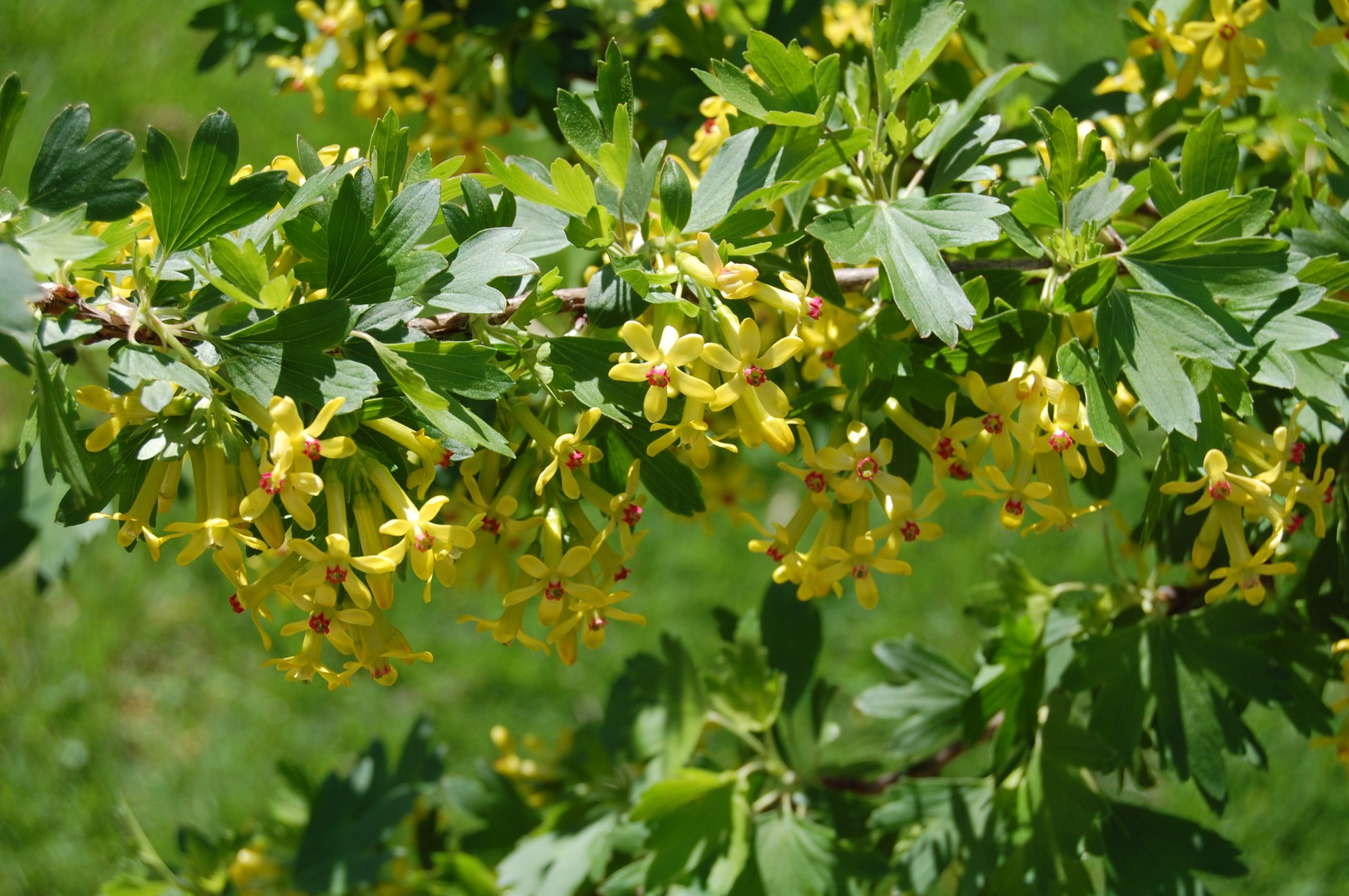




I have a clove currant (from the late Shooting Star Nursery). It is one of the survivors of my garden that has been overtaken by weeds, especially bindweed. So, I was glad to find it because, as you note, the fragrance is exquisite. Onward!
I miss Shooting Star Nursery.
I have not tried to grow currants, yet, but am intrigued by the photos and descriptions of them here.
You might give them a try. They are restricted in some states.
Are either of these varieties tasty for humans? I am one of those crazy people who loves currants 🙂
Tasty? In my opinion, no. They are quite sour. They might make a good jam, though. Or be good in some baked goods.
Both of these sound interesting. I like fragrant plants and plants that feed the wildlife.
Ditto!
Beautifully coloured and scented shrubs! We grow three in our UK garden which are admired so much by visitors on our open days ans we sell lots of shrubs we have grown from cuttings. It is quite an unusual shrub in gardens here.
They are quite easy to grow from cuttings! Almost too easy!
It looks like a great addition to your garden: lovely and an excellent wildlife plant. Love your rooster, btw!
Oh, thank you! His name is Rupert. Sadly his paint is wearing off.
I love how elegant the Clove Currant looks against your home (first photo). I now understand why birds flock to your garden: they find shelter in the thicket and food too! I keep a couple of “mock orange” shrubs for their fragrant blooms despite being totally unimpressive the rest of year.
I immediately think favorably of your native shrubs: currant scones have always been my favorite!
Currant scones sound delicious. We used to have a mock orange that had no fragrance. Can you imagine such a thing?
I do not know the Clove Currant but I think I will try to source one. Both the currants you have look as if they would be very popular with the bees, too! Amelia
Yes, the bees like them, and hummingbirds too! By the way, I think possibly my comments on your blog are being blocked again. Damn WordPress.
How strange. Amelia
Some currants are host to white pine blister rust so we’re not allowed to grow them here. I’m not sure about the clove currant. I’ll have to look it up.
I’ve heard of that. So unfortunate for all concerned.
Sounds like two native shrubs that need more attention. Thanks for sharing!
You’re welcome! Yes, they are worth trying.
It is so good that you are reminding people to widen their use of native shrubs. Not only do they provide food for birds but also shelter. Everyone should have a wild corner, at least!
I agree! A little thicket is a gift to the birds, and also a good place to dump some of your garden waste.
How did you know? 😀
I have never seen (or smelled) a clove currant, but it does sound and look quite lovely. Great that your shrubs provide berries and cover for the birds. 😃
Clove Currant has a really sweet, spicy fragrance. I love it!
I am so glad to learn about these both! Thank you for your annual promo!
You’re welcome! The American Black Currant is native to your area, I think.
For this particular genus, I think that those that are native here are actually prettier, with pendulous pink trusses of tiny flowers. They are quite florific, although not fragrant, and mostly fruitless, even in the wild. It seems odd that they put so much effort into bloom for such minimal fruit.
Not familiar with those, sounds like you may be right.
Both are interesting and useful, are they edible? xxx
Yes, but not very tasty. Unless you love sour.
A gorgeous plant. I don’t think I have seen it before, or if I have certainly not in flower. The red centres are an echo of a red currant, or perhaps that should be a prophecy.
Perhaps they are distant relations within the same genus.
Hello Jason, I can forgive almost any plant that looks mediocre most for the year, has inconspicuous flowers or is just totally forgettable if it has a stunning scent when in flower that fills the air, even if just for a few weeks. It’s almost like a slap-in-the-face reminder of why you keep it around when it doesn’t appear to do anything.
Yes! I feel the same!